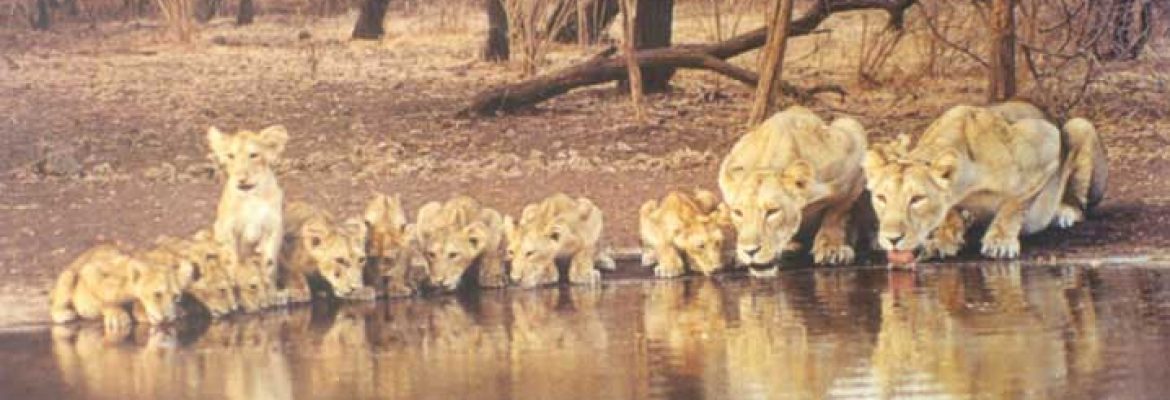Gir National Park, Gujarat, India
The last refuge of the Asiatic lion (Panthera leo persica) is this forested, hilly, 1412-sq-km sanctuary about halfway between Veraval and Junagadh. It feels beguilingly uncommercial, and simply driving through the thick, undisturbed forests would be a joy even if there wasn’t the excitement of lions and other wildlife to spot.
The sanctuary was set up in 1965, and a 259-sq-km core area was declared a national park in 1975. Since the late 1960s, lion numbers have increased from under 200 to over 400. The sanctuary’s 37 other mammal species, most of which have also increased in numbers, include dainty chital (spotted deer), sambar (large deer), nilgais (large antelopes), chousinghas (four-horned antelopes), chinkaras (gazelles), crocodiles and rarely seen leopards. Sasan Gir is a great destination for birders too, with over 300 species, most of them resident.
While the wildlife has been lucky, more than half the sanctuary’s human community of distinctively dressed maldhari have been resettled elsewhere, ostensibly because their cattle and buffalo were competing for food resources with the antelopes, deer and gazelles, while also being preyed upon by the lions and leopards. About 1000 people still live in the park, however, and their livestock accounts for about a quarter of the lions’ diet.
Gir is no longer big enough for the number of lions that currently live here; some may be moved to Madhya Pradesh to protect genetic diversity, but the Gujarat government opposes this plan, vying to remain the sole home of India’s lions.
The sanctuary access point is Sasan Gir village, on a minor road and railway between Veraval and Junagadh (about 40km from each). The best time to visit is from December to April; the sanctuary is closed from 16 June to 15 October and possibly longer if there has been a heavy monsoon.
Visit India Epic India Route © Monika Newbound


